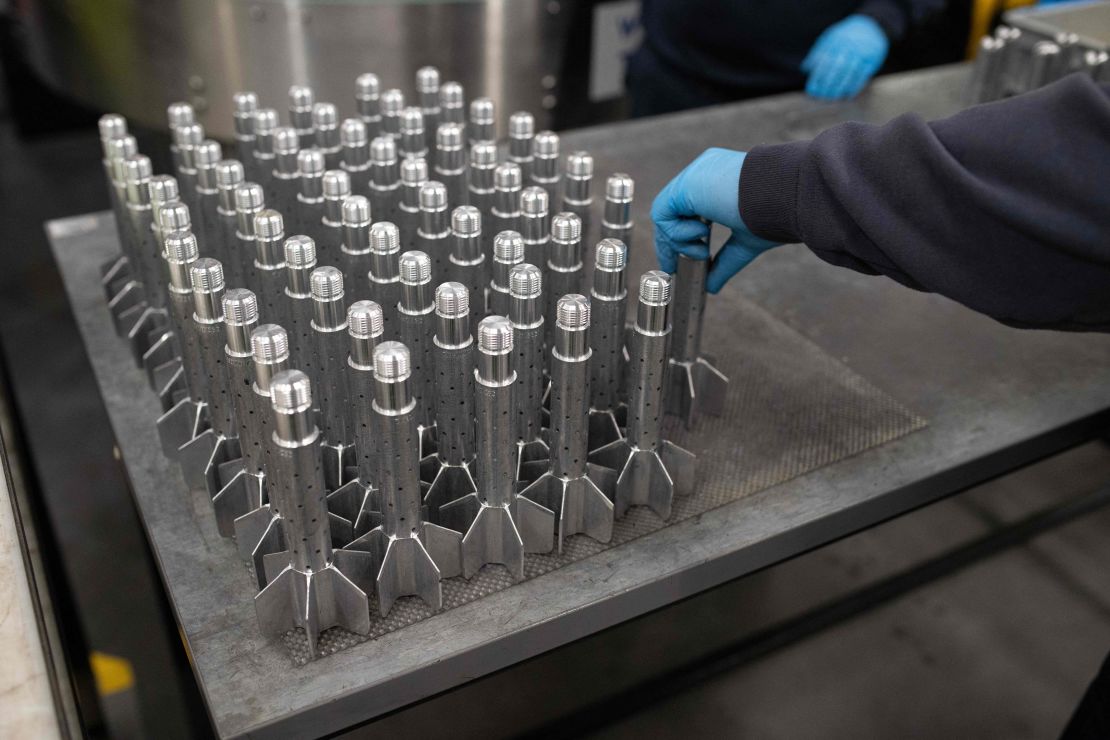Western defense companies have been riding high since Russia launched its full-scale invasion of Ukraine two years ago, and a proliferation of geopolitical threats is likely to keep the industry booming despite doubts about further US military aid for Kyiv.
Since February 23, 2022, the day before Moscow began bombing several Ukrainian cities, the stocks of five of the top US and European defense contractors have all risen. The companies — Europe’s BAE Systems, Thales and Rheinmetall, and Lockheed Martin (LMT) and Northrop Grumman (NOC) in the United States — have all either provided weapons for the battlefield in Ukraine or signed agreements to do so.
Governments have donated ammunition, tanks, and fighter jets to Ukraine, are replenishing their own depleted stockpiles, and have committed billions more to their defense budgets.
Canada and the European members of the North Atlantic Treaty Organization, which make up the bulk of NATO’s membership, spent 11% more on defense in 2023 than the previous year. That’s an “unprecedented rise,” according to NATO chief Jens Stoltenberg. The military alliance expects a record 18 of its 31 member states to spend at least 2% of their gross domestic product on defense this year, a funding target set back in 2014, when Russia annexed a part of Ukraine.
Rising defense budgets mean “there’s going to be more work for the private sector,” Trevor Taylor, a director at the Royal United Services Institute or RUSI, a London-based think tank, told CNN. He added that it was difficult to see how Russia wouldn’t continue to pose a threat, particularly to Europe, over at least the next decade.
Record earnings, more jobs
For major defense contractor Saab, it has been “a dramatic two years,” according to chief executive Micael Johansson.
In that time, the Swedish company has invested billions to build up production capacity. It has expanded its workforce by 3,600 people since the start of 2022, and expects it to grow by another 2,000 this year, Johansson told CNN.
“I have been so long with this company and I have never seen anything like this in terms of boosting capacity,” he added.
Saab’s profit soared 30% last year to hit an all-time high.
The company’s biggest customer is the Swedish government, which announced another package of military support for Ukraine last week, including donations of artillery ammunition and anti-tank weapons. Meanwhile, Poland, Ukraine’s neighbor, has become a “big customer” since the war broke out, Johansson said.
BAE Systems has also enjoyed healthy earnings. On Thursday, the UK defense contractor reported profit of £2.6 billion ($3.3 billion) in 2023, up 8% from 2022.
The company is planning “for a long-term growth trajectory,” chief executive Charles Woodburn said when presenting the latest earnings. “While some Ukraine-related orders are starting to come through, restocking and the impact of ongoing defense spending increases will be evident further down the line,” he noted.
‘Era of insecurity’
Continued US military support for Ukraine on the scale of the past two years is looking increasingly unlikely. A $60 billion aid package for Kyiv, most of it earmarked for defense, remains stuck in Congress. House Republicans — backed by Donald Trump, the Republican frontrunner for this year’s US presidential election — have so far refused to take up a bill that would deliver that aid.
European governments are scrambling to find ways to fill the gap. According to the Kiel Institute for the World Economy, a German think tank, the European Union would need to “double its current level and pace of arms assistance” to Ukraine this year to fully replace that provided by the United States.
But the pressure on Western governments to beef up their military coffers will outlast the Ukraine war, analysts say, and it started to rise even before Moscow sent its troops marching toward Kyiv two years ago.

Trump has spent years chiding NATO members for failing to meet the 2% spending target. The former US President, who is expected to run against Joe Biden for president in November, said this month that he would encourage Russia to do “whatever the hell they want” to NATO members not meeting their defense spending obligations.
The International Institute for Strategic Studies (IISS) said earlier this month that global defense spending had risen 9% to a record $2.2 trillion in 2023, as the world adjusts to what it called an “era of insecurity.” The London-based think tank cited the threat Beijing poses to Taiwan among a litany of other risks.
China claims control over the democratic, self-governing state, and has been ramping up military exercises close to the island, fueling fears that is preparing to invade.
The IISS also pointed to the Israel-Hamas war and related attacks by Houthi militants on ships in the Red Sea.
It’s not just large, established defense contractors that are getting a boost. The febrile global environment has helped lift the shares of Renk, a newly-listed German maker of military tank gearboxes, including those donated by Berlin to Ukraine. The firm’s stock has soared nearly 80% since it went public in Frankfurt on February 7.
That day, Renk chief executive Susanne Wiegand told Reuters that the October 7 attacks on Israel and the ensuing war in Gaza, had increased the appeal of defense stocks.
And this appeal is unlikely to fade soon, given growing defense spending by governments.
“The great power competition is largely the driver of where spending is going, and that is predicated on the rise of China and the continued negative influence of Russia’s engagements in Europe,” said Myles Walton, a defense analyst at New York-based Wolfe Research.
Johansson of Sweden’s Saab agrees. “Even if we get a reasonable end to this tragic war (in Ukraine), countries will not let their guard down again… We will still have Russia as a neighbor, which is very aggressive, so countries must have resilience and be prepared.”





